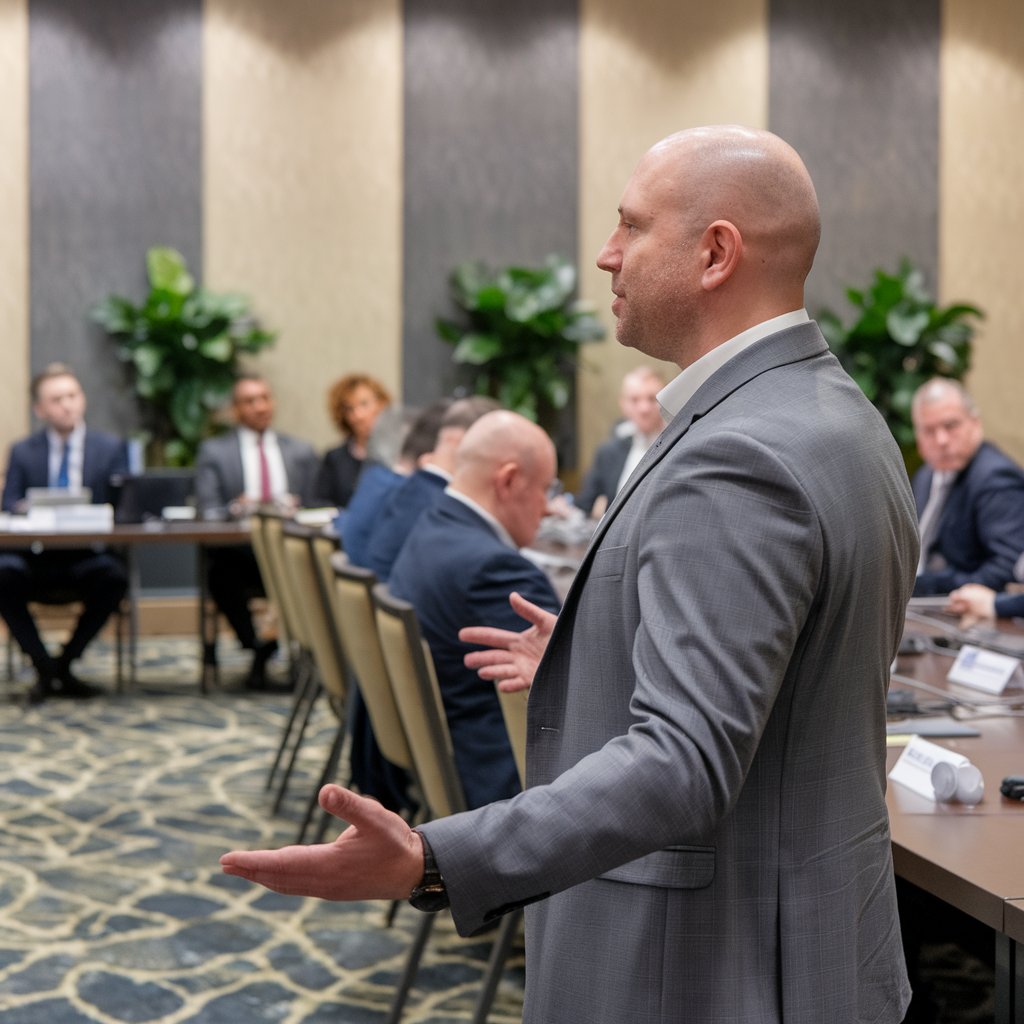What Happens When You Hire an Insolvency Practitioner Many UK directors and business owners face stressful financial problems—ranging from mounting debts to the risk of compulsory liquidation. When these challenges surface, seeking professional support can be the turning point. Hiring an insolvency practitioner UK for your company brings legal protection, business rescue opportunities in the […]
How Much Do Insolvency Practitioners Charge? Understanding the Costs
Dealing with serious debt can be overwhelming, particularly when navigating the complexities of English insolvency law. Understanding the fee structures of licensed insolvency practitioners becomes essential when individuals or businesses find themselves facing financial distress under the comprehensive framework established by the Insolvency Act 1986. These qualified professionals, licensed by recognised professional bodies including the Institute of Chartered Accountants in England and Wales (ICAEW), the Association of Chartered Certified Accountants (ACCA), the Insolvency Practitioners Association (IPA), or the Institute of Chartered Accountants of Scotland (ICAS), provide crucial guidance through various insolvency procedures. However, their fees can significantly impact creditors and anyone experiencing insolvency under English law. Understanding insolvency practitioner fee structures helps stakeholders remain informed and avoid unexpected costs throughout the insolvency process. Whether considering creditors' voluntary liquidation, members' voluntary liquidation, or structured arrangements such as Company Voluntary Arrangements (CVAs) or Individual Voluntary Arrangements (IVAs), understanding costs enables better financial planning and decision-making. When engaging a licensed insolvency practitioner under English law, understanding their fee calculation methods is essential for proper financial planning. Many practitioners employ multiple fee methodologies depending on case complexity, the nature of the insolvency procedure, and specific requirements established by creditors or the court. Regulatory Compliance: These fee structures must comply with the Statement of Insolvency Practice 9 (SIP 9), which governs remuneration of insolvency practitioners and ensures transparency in fee arrangements. The regulatory framework requires practitioners to provide detailed fee estimates and obtain appropriate approvals before commencing work. A prevalent method employed by licensed insolvency practitioners involves billing based on time spent on specific case activities, with hourly rates varying according to staff seniority, case complexity, geographical location, and the specialist expertise required for particular insolvency procedures under English law. Junior staff members typically charge lower hourly rates than senior managers or partners, reflecting their experience levels and the nature of tasks they perform. London-based firms often command higher rates than regional practices, reflecting higher operational costs and market conditions in the capital. While this time-based approach provides transparency in billing, it can make total cost prediction challenging at the outset of proceedings. Under current regulatory requirements, practitioners must provide comprehensive fee estimates before commencing work, outlining expected time commitments, hourly rates for different staff grades, and anticipated total costs. Some stakeholders prefer fixed fee arrangements because the total cost is agreed before work commences, providing certainty and enabling accurate budgeting for insolvency procedures. This approach is frequently employed in straightforward cases such as simple voluntary liquidations, standard CVAs, or routine IVAs where the scope of work is clearly defined. Fixed fees offer transparency and predictability, particularly valuable for smaller companies or individuals with limited resources who need to understand their financial commitments from the outset. However, unexpected complications or additional work requirements can result in supplementary fees if creditors approve additional costs beyond the original fixed arrangement. In certain circumstances, practitioners charge fees calculated as a percentage of funds recovered through asset realisations or debt collections, creating a performance-based fee structure that aligns practitioner incentives with creditor returns under English insolvency law. This methodology typically involves percentages ranging from 3% to 15% of assets realised, though complex cases involving specialist assets or challenging recovery situations may command higher percentages. The approach incentivises practitioners to maximise returns for creditors, as higher recoveries directly translate to increased practitioner remuneration. Insolvency procedures under English law encompass various formal processes, each with distinct fee structures reflecting their complexity, duration, and regulatory requirements. Understanding typical costs associated with different procedures enables better decision-making and financial planning for all stakeholders involved. Voluntary liquidation represents one of the most common insolvency procedures, with fees varying significantly between Creditors' Voluntary Liquidation (CVL) for insolvent companies and Members' Voluntary Liquidation (MVL) for solvent companies winding up their affairs. Members' Voluntary Liquidations, designed for solvent companies distributing assets to shareholders, typically cost between £3,000 and £5,000 for straightforward cases. More complex MVLs involving multiple assets, tax planning considerations, or lengthy distribution processes may cost upwards of £15,000, reflecting the additional work required. Creditors' Voluntary Liquidations involve more extensive regulatory requirements, including detailed investigations into company affairs, director conduct assessments, and complex creditor claim processes. Fees typically range from £5,000 to £20,000 or more, depending on case complexity and asset values involved. Voluntary arrangements provide structured repayment plans enabling debt resolution whilst avoiding the more severe consequences of formal insolvency procedures. Fees vary between Individual Voluntary Arrangements (IVAs) for personal debt and Company Voluntary Arrangements (CVAs) for business debt restructuring. CVAs typically commence with initial fees between £2,500 and £5,000 for proposal preparation, creditor consultation, and arrangement implementation. These upfront costs cover the substantial work required to assess company finances, negotiate with creditors, and prepare comprehensive proposals meeting regulatory requirements. Following CVA approval, the supervising practitioner typically charges ongoing fees representing 10-15% of funds distributed to creditors throughout the arrangement period. For arrangements spanning several years, total fees can reach £10,000 to £30,000 or more, depending on the company size and arrangement complexity. IVA practitioner charges are generally lower than business arrangement fees, reflecting the more standardised nature of personal insolvency procedures and regulatory frameworks governing individual debt solutions. Nominee fees for IVA setup typically range from £1,000 to £3,000, covering initial assessment, proposal preparation, and creditor consultation processes. Ongoing supervisor fees usually represent 15-20% of monthly payments made throughout the arrangement period. Over the standard five-year IVA term, total fees typically range from £4,000 to £8,000. The standardised nature of IVA procedures enables more predictable fee structures compared to bespoke business arrangements. Administration procedures are designed for larger companies with potential for business rescue or enhanced creditor returns compared to immediate liquidation. The complexity and specialist expertise required typically result in higher fees reflecting the intensive work involved. Initial administration costs typically range from £10,000 to £15,000, covering appointment processes, immediate stabilisation measures, and comprehensive business assessments. Total fees can easily exceed £20,000 for complex cases involving business sales, extensive asset realisations, or lengthy administration periods. Understanding payment responsibilities and timing is crucial for all stakeholders involved in insolvency procedures under English law. Payment sources and timing vary depending on the specific procedure, available assets, and stakeholder arrangements established at the outset of proceedings. In most corporate insolvencies, practitioners initially seek to fund their work from company assets, following the statutory hierarchy established under English insolvency law. When insufficient assets exist to cover costs, alternative funding arrangements may be necessary to ensure proper case administration. Company assets typically provide the primary funding source for practitioner fees in corporate insolvency procedures. The statutory hierarchy ensures secured creditors with fixed charges receive priority over floating charge holders and unsecured creditors, influencing the assets available for practitioner remuneration. Director Responsibilities: When companies lack sufficient assets to cover insolvency costs, directors may choose to fund basic insolvency procedures personally to ensure proper company closure and avoid potential director disqualification or personal liability issues under the Company Directors Disqualification Act 1986. Licensed insolvency practitioners must obtain appropriate fee approval before drawing remuneration, typically through creditor meetings, written resolutions, or court orders depending on the specific procedure and circumstances involved. Creditor committees, where established, play important roles in fee oversight, reviewing practitioner reports and challenging excessive costs where appropriate. If creditors disagree with proposed fees, court applications may be necessary to resolve disputes and establish fair remuneration levels. Individual insolvency procedures differ significantly from corporate cases, with IVAs representing popular solutions for personal debt management under legally binding arrangements that provide alternatives to bankruptcy proceedings. IVA fees comprise two main components: nominee fees for arrangement setup and ongoing supervisor fees covering day-to-day administration throughout the arrangement period. Nominee fees are often funded from early arrangement contributions, reducing upfront payment requirements for individuals already experiencing financial difficulty. Supervisor fees typically represent a percentage of all payments made throughout the arrangement period. Bankruptcy involves upfront filing fees currently set at £680, plus potential additional fees if private practitioners are appointed as trustees. While bankruptcy may appear cheaper initially, it can result in more severe long-term consequences, particularly for homeowners or individuals in certain professions. IVAs provide more structured approaches, preserving assets and maintaining clearer creditor relationships whilst offering defined timescales for debt resolution and financial rehabilitation. All IVA practitioners must comply with strict ethical codes and provide comprehensive fee disclosure within arrangement proposals. Creditors must approve these costs, ensuring fairness and transparency throughout the process. If IVAs fail or require modifications, practitioners may charge additional fees with creditor approval. Individuals should always request detailed fee breakdowns when considering IVA arrangements to ensure full understanding of financial commitments involved. Achieving value for money in insolvency proceedings requires balancing cost considerations against potential outcomes and practitioner expertise. The cheapest option may not deliver optimal results for creditors or other stakeholders involved. Evaluation should consider practitioner experience, transparent fee structures, and track records of effective recoveries or successful restructurings. Fee estimates should be scrutinised carefully to ensure reasonableness for the anticipated work scope. Current regulations require practitioners to provide comprehensive cost predictions, including time breakdowns, hourly rates, and anticipated expenses. If costs are likely to exceed original estimates, practitioners must return to creditors or courts for additional approval. Companies should assess firm size, case complexity, and practitioner experience when evaluating fee proposals. Higher fees may be justified if they result in superior outcomes, such as enhanced creditor returns or successful business rescues. Creditors can reject excessive fees through voting processes or establish creditor committees to scrutinise costs more closely. Courts can intervene if agreements cannot be reached, whilst regulatory bodies accept complaints regarding unreasonable fee levels. Fair fee determination maintains trust and ensures insolvency procedures serve stakeholder interests effectively whilst providing appropriate remuneration for professional services rendered. Understanding insolvency practitioner charges is essential when facing debt difficulties under English law. Fees vary based on time spent, fixed arrangements, or percentage of recoveries, with different procedures involving distinct cost structures and regulatory requirements. Most importantly, focus should remain on overall value rather than simply minimising costs. Experienced practitioners can preserve businesses, enhance creditor recoveries, or achieve superior outcomes that justify higher fees through demonstrable value creation. When dealing with insolvency, seek comprehensive fee breakdowns and choose practitioners who best fit your specific needs and circumstances. Careful upfront evaluation can deliver the optimal combination of affordability, fairness, and professional expertise necessary for successful insolvency outcomes under English law. Insolvency Practitioner Fee Structures: How Costs Are Calculated

Time-Cost Basis: Understanding Hourly Rate Charges
Fixed Fee Arrangements: Certainty in Cost Planning
Percentage of Realisations: Asset-Based Fee Calculations
How Much Does Insolvency Cost? Fees for Different Insolvency Proceedings

Insolvency Procedure
Typical Fee Range
Key Factors Affecting Cost
Members' Voluntary Liquidation (MVL)
£3,000 - £15,000+
Asset complexity, tax planning, distribution period
Creditors' Voluntary Liquidation (CVL)
£5,000 - £20,000+
Asset values, director investigations, creditor claims
Company Voluntary Arrangement (CVA)
£10,000 - £30,000+
Company size, arrangement complexity, duration
Individual Voluntary Arrangement (IVA)
£4,000 - £8,000
Debt levels, arrangement terms, duration
Administration
£10,000 - £20,000+
Business complexity, rescue potential, asset sales
Voluntary Liquidation Costs: Creditors' and Members' Routes
Voluntary Arrangement Fees: Individual and Company Options
Company Voluntary Arrangement (CVA) Costs
Individual Voluntary Arrangement (IVA) Costs

Administration Costs: Higher Complexity, Higher Fees
Who Pays the Insolvency Practitioner Fees and When?
Payment Sources in Corporate Insolvency
Fee Approval and Timing of Payments in Insolvency Proceedings
IVA Practitioner Charges and Individual Insolvency Costs
Typical IVA Practitioner Charges Explained
Bankruptcy Costs vs. IVA Fees
Fee Transparency and Regulation for Individual Insolvency
Fee Estimates and Value for Money in Insolvency Proceedings

Fee Estimate Requirements: What to Expect from Your Practitioner
Evaluating Whether Companies Are Getting Value for Money
Challenging Excessive Fees in Insolvency Proceedings
Conclusion
How Are Insolvency Practitioners Appointed – UK Expert Guide Navigating financial turmoil can be overwhelming for company directors and sole traders alike. Faced with mounting debts, threats of compulsory liquidation, or creditor demands, knowing “how insolvency practitioners are appointed” becomes crucial for preserving your organisation. In the UK, professional insolvency services, such as company voluntary […]
Administration might be your lifeline when your company's drowning in debt and creditors are circling. But here's what most directors don't understand: it's not just about buying time — it's about buying the right kind of time, with the proper professional support. The difference between administration working for you or against you often comes down […]
Can an Insolvency Practitioner Stop Creditors? In the UK, mounting pressure from creditors can disrupt cash flow, increase stress for directors, and push a company toward insolvency. Professional guidance plays a pivotal role in countering these challenges. Nexus Corporate Solutions Limited specialises in helping businesses find relief from persistent creditors, providing strategic solutions that align […]
When your company's in financial trouble, one of the biggest worries is what happens to everything you've built. Your equipment, property, stock — the assets that represent years of hard work. It's a valid concern, and you're not alone. The reality? How insolvency practitioners handle your company's assets can make or break the outcome for […]
Insolvent trading can trigger severe repercussions for UK directors, including personal liability and possible disqualification. When a business is unable to pay debts and continues to trade without a reasonable prospect of avoiding insolvency, the law may classify this as wrongful trading. The Insolvency Act 1986, alongside related legislation, outlines civil and criminal penalties for […]
Recognising the signs of business insolvency early is vital for UK companies. Overlooked warning signals—such as recurring cash flow issues, unpaid HMRC tax arrears, or missed staff wages—can quickly escalate into serious risks that demand immediate attention. Being aware of these common signs of business insolvency enables directors to take timely action, whether through careful […]
Supplier insolvency can have serious consequences for UK companies, creating ripple effects that extend beyond the affected supplier. Cash flow interruptions, delayed payments, and increased operational risks are common outcomes. When a key supplier or client becomes insolvent, contracts may be disrupted, insurance coverage can be affected, and overall profitability may decline. Nexus Corporate Solutions […]
Struggling with IVA monthly payments can feel overwhelming, especially when daily financial obligations pile up. An Individual Voluntary Arrangement (IVA) is designed to help those in debt regain stability by consolidating and managing repayments under a legally binding agreement. However, life changes—like reduced monthly income, sudden expenses, or shifts in personal circumstances—often make sticking to […]
Experiencing financial difficulty can make everyday life more challenging, especially when an individual or business director needs to secure a stable living arrangement. In the UK, an Individual Voluntary Arrangement (IVA) offers a legally binding debt solution that eases pressure from creditors. However, many worry about problems renting after IVA. Questions about how this might […]
Related Articles from the same category:

Address: Apex Building, 1 Water Vole Way, Balby, Doncaster, South Yorkshire, DN4 5JP
Tel: 01302 430180
Services
Company


